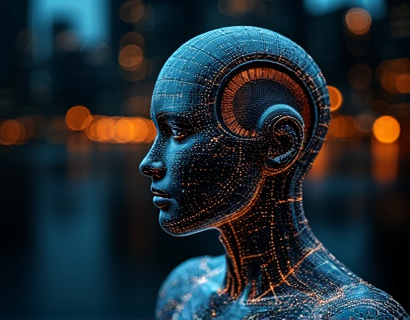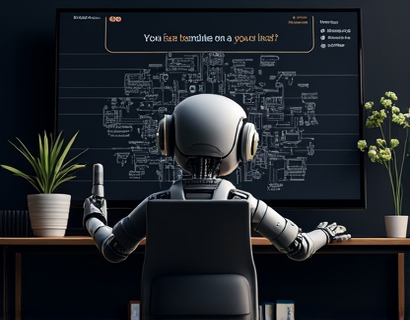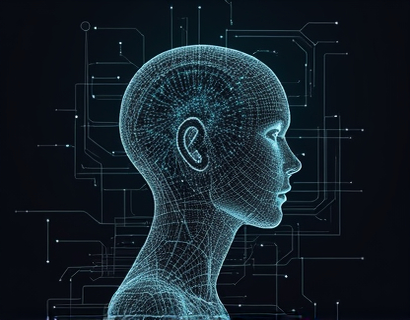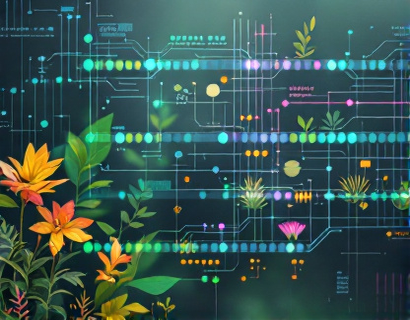AI-Powered Translation Tools: Elevating Global Communication with Advanced Technology
In an increasingly interconnected world, the ability to communicate across language barriers has become more crucial than ever. AI-powered translation tools are at the forefront of this revolution, offering precise and efficient translations that break down linguistic obstacles and foster global collaboration. These advanced online solutions are designed to enhance business interactions and personal communications, making it easier for individuals and organizations to connect with diverse audiences.
The evolution of translation technology has been remarkable, transitioning from rule-based systems to neural machine translation (NMT) powered by artificial intelligence. NMT models, trained on vast datasets, can understand context, nuances, and idiomatic expressions, resulting in translations that are not only accurate but also natural and fluent. This advancement has significantly improved the quality of machine translations, making them a reliable option for various applications.
Understanding AI-Powered Translation Technology
AI-powered translation tools leverage deep learning algorithms to analyze and translate text. These systems are trained on massive corpora of multilingual data, allowing them to learn patterns and relationships between languages. The core components of these systems include encoder-decoder architectures, attention mechanisms, and neural networks.
Encoders process the input text, converting it into a contextual representation. Decoders then generate the translated text based on this representation. Attention mechanisms enhance the model's ability to focus on relevant parts of the input when generating each word of the output. This approach has proven highly effective in capturing the complexities of language, leading to more accurate and contextually appropriate translations.
Benefits of AI-Powered Translation Tools
The advantages of using AI-powered translation tools are numerous and transformative. Firstly, these tools offer unparalleled accuracy and speed, enabling real-time translations that can keep pace with fast-paced business environments. This efficiency is particularly valuable for multinational corporations that need to communicate across different regions and languages.
Another significant benefit is the reduction in translation costs. Traditional human translation services can be expensive, especially for large volumes of text. AI-powered tools provide a cost-effective alternative without compromising on quality. This makes high-quality translations accessible to small businesses and individuals who might otherwise struggle to afford professional translation services.
Moreover, AI translation tools can handle a wide range of languages and dialects, including less commonly spoken ones. This versatility ensures that users can communicate effectively with audiences worldwide, regardless of the language barrier. For businesses expanding into new markets, this capability is invaluable for building local connections and trust.
Applications Across Industries
The applications of AI-powered translation tools extend far beyond simple text translation. In the healthcare sector, these tools can translate medical records, patient instructions, and research papers, ensuring that critical information is accurately conveyed. This is particularly important in global health initiatives where language barriers can impede the delivery of essential services.
In the legal field, precise translations of contracts, court documents, and legal proceedings are essential. AI-powered tools can help legal professionals overcome language challenges, ensuring that documents are accurately translated and compliance is maintained. This not only saves time but also reduces the risk of misinterpretation.
The travel and tourism industry benefits greatly from AI translation tools as well. Travel guides, hotel information, and customer service interactions can be instantly translated, enhancing the visitor experience and providing seamless support to international guests. This level of service can significantly boost customer satisfaction and loyalty.
Enhancing Business Interactions
For businesses, AI-powered translation tools are a game-changer. They facilitate smoother communication with international partners, clients, and employees. Real-time translation capabilities enable instant collaboration during meetings and negotiations, breaking down barriers that could otherwise hinder progress. This is especially crucial in industries like finance, where precise communication is paramount.
Customer support is another area where these tools shine. Companies can offer multilingual support to their global customer base, ensuring that queries and issues are handled efficiently and effectively. This not only improves customer satisfaction but also enhances the company's reputation as a global player.
Marketing and content creation also benefit from AI translation tools. Businesses can create and distribute content in multiple languages, reaching a broader audience. This global reach can drive higher engagement and sales, making AI-powered translations a valuable asset in digital marketing strategies.
Challenges and Limitations
Despite their many advantages, AI-powered translation tools are not without challenges. One of the primary concerns is the accuracy of translations, especially for complex or specialized content. While NMT has significantly improved, certain nuances and context-specific meanings can still be difficult for machines to capture.
Another limitation is the potential for bias in translation models. If the training data is biased, the translations may reflect these biases, leading to inaccurate or offensive content. Continuous monitoring and updating of the training data are essential to mitigate this risk.
Privacy and security are also critical considerations. Translating sensitive information requires robust security measures to protect data from unauthorized access. Businesses must ensure that the translation tools they use comply with data protection regulations and industry standards.
Future Trends in AI Translation
The future of AI-powered translation tools looks promising, with ongoing advancements set to address current limitations and open new possibilities. One area of focus is the integration of multimodal translation, where tools can handle not just text but also speech, images, and videos. This will enable more comprehensive and context-rich communications.
Another trend is the development of personalized translation models that adapt to individual user preferences and communication styles. By learning from user interactions, these models can provide more tailored and natural translations, further enhancing user experience.
Additionally, the incorporation of emotional intelligence into translation models could revolutionize how machines convey tone and sentiment. This would make translations not only accurate but also emotionally resonant, bridging the gap between literal translation and genuine human communication.
Conclusion
AI-powered translation tools are transforming the way we communicate globally. Their precision, efficiency, and versatility make them indispensable for businesses and individuals seeking to overcome language barriers. As technology continues to evolve, these tools will become even more sophisticated, offering new ways to connect and collaborate across the world. Embracing AI translation is not just a strategic advantage but a necessity in our increasingly globalized society.











































